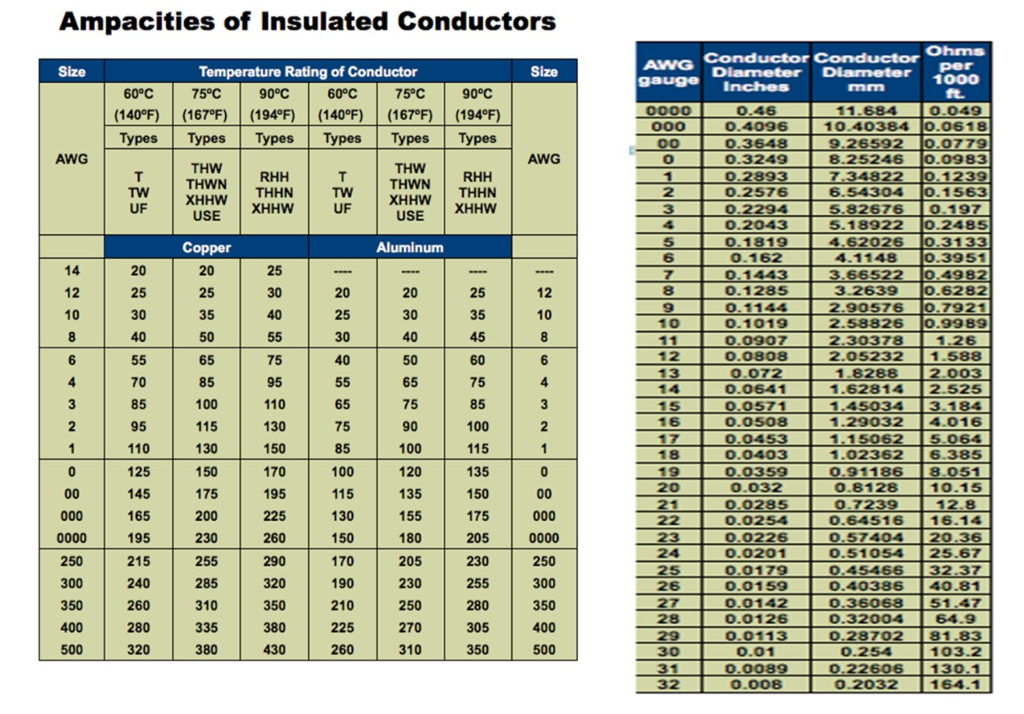

- #200 AMP WIRE SIZE CHART WITH GROUND INSTALL#
- #200 AMP WIRE SIZE CHART WITH GROUND FULL#
- #200 AMP WIRE SIZE CHART WITH GROUND TV#
Would you like to read another article on 100 amp wire size? Hey, i noticed that you are enjoying this article so far. Not compatible with all connectors: Not all connectors are compatible with aluminum wire, so it is important to check the manufacturer's specifications before making a purchase.Difficult to solder: Aluminum wire is difficult to solder, which can make it more difficult to repair electrical connections.Expansion and contraction: Aluminum expands and contracts more than copper wire, which can cause loose connections and arcing.Corrosion-resistant: Aluminum wire is more resistant to corrosion than copper wire, which can extend the lifespan of your electrical wiring.Cost-effective: Aluminum wire is often less expensive than copper wire, which can save you money on your electrical project.Lightweight: Aluminum wire is lighter than copper wire, which can make it easier to work with and install.However, aluminum wire can be more prone to corrosion than copper wire, and it is important to use the correct connectors when working with aluminum wire. Aluminum wire is a good conductor of electricity, and it is also relatively lightweight and easy to work with. It is often used in residential and commercial wiring, as well as in some industrial applications. MALLEABILITY - Being malleable means that when using copper you can bend it more easily than some other type of wiring.Īluminum wire is a type of electrical conductor that is made from aluminum.CORROSION RESISTANCE - With a low reactivity rating, copper is the number one choice for many projects.HEAT RESISTANCE -Heat resistance is another great benefit to choosing copper.CONDUCTIVITY - Copper is most conductive which is why someone would choose it.Copper can be more expensive than other materials but there are certain benefits that makes the upfront cost worth it.

If you read the reviews on amazon, you will see that it isĬhoosing to use copper wiring will provide the best protection from surges. If you're looking for the perfect 200 amp wire for your next project, look no further than the 100' Nassau 4/0-4/0-4/0-2/0 SER Aluminum Service Entrance Cable.

#200 AMP WIRE SIZE CHART WITH GROUND FULL#
These are the safest wire sizes because they will allow you to use the full amperage of your electrical service without too high of a voltage To safely use a 200 amp electrical service, you will need to use #4/0 Aluminum or #2/0 Copper. Please note that installing a 200 amp service is not a simple DIY project and should onlyĪ certified electrician is necessary for handling these types of amperages and wiring.
#200 AMP WIRE SIZE CHART WITH GROUND INSTALL#
Whenever you decide to install a 200 amp electrical service, the size wire you need to use is determined by the distance of your run and the voltage drop allowable. These are not legal for grounding the home electrical service, and they can cause your grounding system to fail when it is needed most.What Size Wire For 200 Amp Electrical Service? Full Guide
#200 AMP WIRE SIZE CHART WITH GROUND TV#
It is unwise and unsafe to install the shorter, 4-foot ground rods often sold for grounding things like TV antennas and other individual devices. Usually, the area close to the foundation has enough moisture due to runoff water from downspouts. Whenever possible, ground rods should go into moist soil around your home. Some counties also allow or require a footing or foundation ground connection for new construction. Note: Most local jurisdictions and local power companies require the 2-ground rod method to pass inspection. This is usually a better option, but the rods must be at least six feet apart, according to the NEC. In very dry ground, which provides more resistance than moist soil (meaning it does not accept electricity as readily), ground rods are sometimes stacked and joined with a special clamp so they can extend deeper into the earth.Īnother option is to add a second ground rod. As a rule, ground rods must be a minimum of eight feet long and should not be cut down. Ground rods come in both 8-foot and 10-foot lengths, with 8-foot being the most common size used in residential installations. The grounding rod that connects the home grounding system into the earth is a long metal rod, usually copper bonded to steel, galvanized iron, or stainless steel. The Spruce Home Improvement Review Board.


 0 kommentar(er)
0 kommentar(er)
